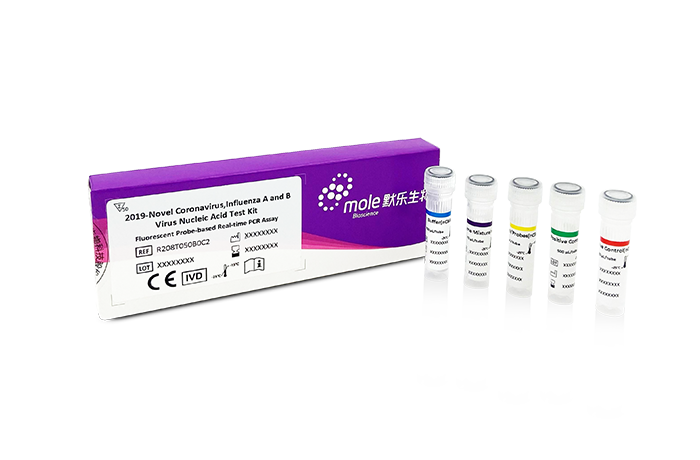
Influenza is a kind of highly acute respiratory infectious diseases caused by the infection of influenza virus, it can be suddenly onset and rapidly spread in a short term, resulting in different degrees of prevalence, with high incidence rate and a certain mortality rate. The symptoms caused by influenza A and B virus are similar. The most obvious characteristics are acute high fever and cough. Other symptoms include chills, headache, muscle ache, fatigue, nasal congestion and runny nose, etc. IFA has the strongest antigenic variation, which often causes worldwide pandemic. IFB has a relative weak variability, generally causes mild diseases, mainly attacks children, and may cause local outbreaks.
The shelf life of this kit is 12 months when stored in freezer at - (20±5) °C.
Specificity: By using the national reference or enterprise reference for Influenza A and B virus nucleic acid to evaluate this kit, the results were consistent with both positive references and negative references.
The limit of detection (LoD): The LoD of influenza B/Yamagata virus, influenza B/Victoria virus, seasonal H1N1 influenza virus and seasonal H3N2 influenza virus are 2.0×103 TCID50/L, 2.1×103 TCID50/L,2.5×103 TCID50/L and 1.0×103 TCID50/L respectively.
Compliance rate of enterprise reference: The test results of the positive reference are all positive, and the positive reference are from nucleic acid extracts of inactivated clinical samples or virus cultures. The test results of negative reference are all negative, and all negative reference materials are derived from nucleic acid extracts of inactivated pathogens.
IFA has the strongest antigenic variation, which often causes worldwide pandemic. IFB has a relative weak variability, generally causes mild diseases, mainly attacks children, and may cause local outbreaks.